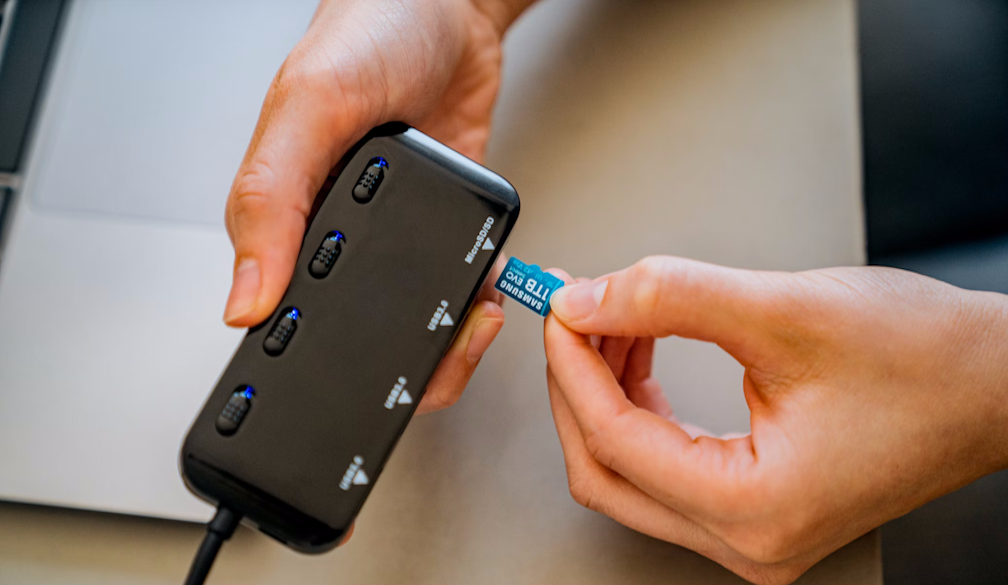The Best Portable Charger in 2025: What to Know Before You Buy

Let’s face it: running out of battery when you’re on the go is still one of the most frustrating tech problems in 2025. Whether you’re trying to navigate in a new city, finish a last-minute work call, or capture the perfect photo, a dead phone can be a real buzzkill. That’s where a solid portable charger steps in not just as a convenience, but almost as a daily necessity.
Portable chargers have come a long way in recent years. They’re faster, smarter, and more compact than ever before. But with all the new models and features hitting the market, choosing the right one can feel overwhelming. If you’re considering buying one this year, here’s everything you need to know to make a smart choice.
Why you still need a Portable Charger in 2025
Even with smartphone batteries improving, they’re still no match for our demanding routines. Between streaming, GPS navigation, video calls, and countless apps running in the background, your phone likely doesn’t last the full day. Add travel, outdoor activities, or emergency situations into the mix, and the need for a portable charger becomes even more obvious.
Plus, with the growing ecosystem of power-hungry devices like wireless earbuds, smartwatches, tablets, and handheld gaming consoles, a good portable charger is now a multi-device solution.
What’s new in 2025 models?
The latest portable chargers are smarter than ever. Many now include features like:
- GaN (Gallium Nitride) technology for faster charging in a smaller body.
- Built-in cables or magnetic connectors to reduce clutter.
- Smart power distribution, which adjusts output based on the device’s needs.
- Wireless charging for compatible phones and earbuds.
- Solar charging capabilities for eco-conscious users and outdoor lovers.
Some models even come with displays that show real-time charging stats, battery health indicators, or even mobile apps to manage your charger remotely. The tech has definitely leveled up.
Key features to look for
Before you hit “buy now,” here are some essential features you should consider:
1. Battery capacity
Capacity is measured in milliamp-hours (mAh), and it determines how much power your charger can store. If you’re only looking to top off your phone during the day, a 5,000–10,000mAh portable charger should be plenty. But if you're traveling, or need to charge multiple devices, you might want to go for a 20,000mAh or higher option.
Keep in mind: higher capacity often means more weight and size. It’s a trade-off between portability and power.
2. Charging speed and output
Wattage matters especially if you want to charge your device quickly. Look for chargers that support USB Power Delivery (PD) or Quick Charge (QC). A good rule of thumb: anything over 18W is solid for phones; 30W or more is better if you plan to charge tablets or even laptops.
Some high-end models now support up to 100W output, which is enough to power a MacBook or similar laptop.
3. Port selection
The more ports, the merrier especially if you're juggling multiple devices. USB-C is now the standard, but having a mix of USB-A and USB-C ports gives you flexibility. Some new portable chargers also support pass-through charging, which allows you to charge the power bank and your devices simultaneously.
4. Size and weight
Ask yourself: will this charger live in your backpack, your pocket, or a drawer at work? Size and weight can be surprisingly important. A slim 10,000mAh charger might be perfect for everyday carry, while a bulkier 26,800mAh model is better suited for travel or emergency backup.
5. Build quality and design
A cheap charger might save you money upfront, but if it’s made with poor-quality materials, you’ll be replacing it sooner than you’d like. Go for a portable charger with a solid build something that can survive the occasional drop or bump.
Bonus points if it’s water-resistant or rugged, especially if you plan to use it outdoors.
Recommended brands and models
While we won’t endorse a single model, a few brands consistently earn praise for reliability and innovation. Anker, Zendure, Baseus, and UGREEN all offer excellent options in 2025, ranging from slim single-device chargers to high-capacity power stations.
Look for brands that back their products with solid warranties and have clear safety certifications like CE, FCC, and RoHS. A portable charger is no place to cut corners on quality.
Don’t forget these extras
Some accessories and features can make a big difference:
- Built-in cables: No need to carry extras.
- LED indicators or digital displays: Helpful to know how much juice you have left.
- Wireless charging pads: Great for phones and earbuds.
- Solar panels: Handy for campers or emergencies.
And finally, check the compatibility with your most-used devices. Not all chargers play equally well with every phone or accessory, especially when it comes to fast-charging standards.
Final thoughts
A portable charger might seem like a small purchase, but it plays a big role in keeping your day running smoothly. The best one for you depends on your lifestyle: Are you always on the move? Do you travel often? Do you need something ultra-slim or ultra-powerful?
Whatever your needs, don’t just grab the first model you see on sale. Take a few minutes to weigh your options, read reviews, and choose a charger that fits seamlessly into your routine. With the right one in your bag or pocket, you’ll never have to worry about red battery bars again.










